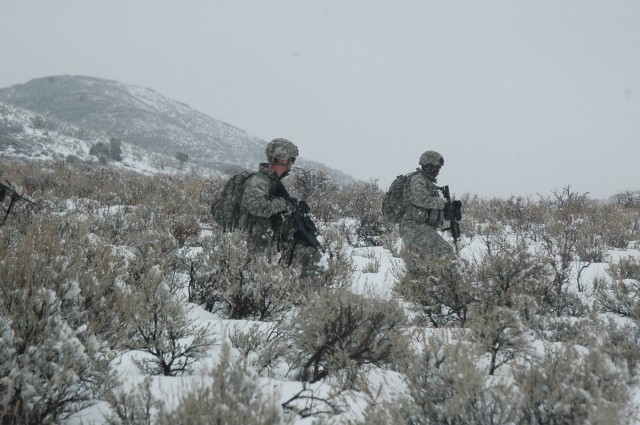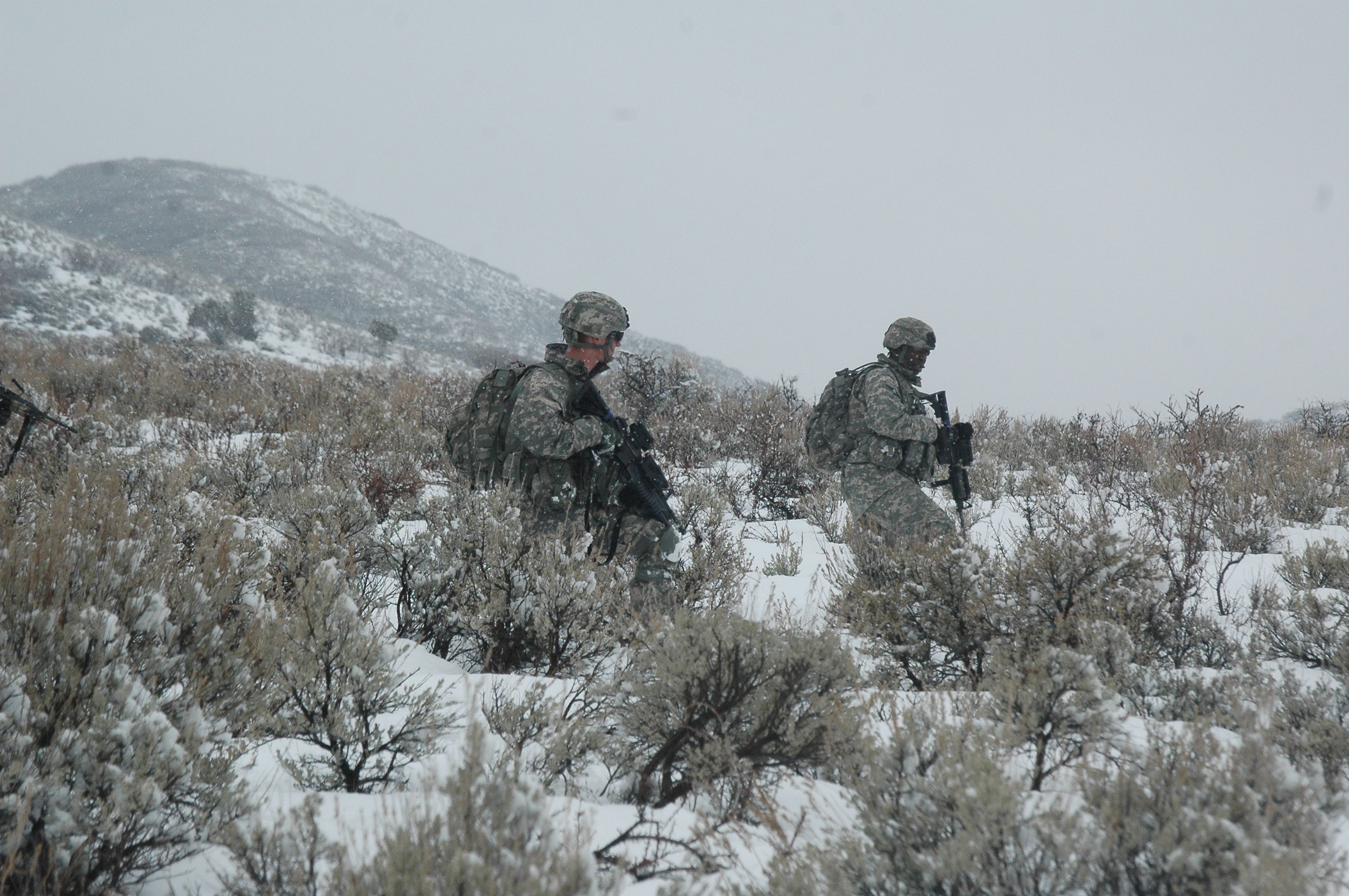
CAMP WILLIAMS, Utah - Infantrymen from 4th Brigade Combat Team, 10th Mountain Division, in Utah to train for an upcoming deployment, began Off Post Training (OPT) with land navigation at Camp W.G. Williams, Utah, Feb. 11-12.
After having arrived in Utah from Louisiana just one day earlier, Soldiers from Company A, 2nd Battalion, 4th Infantry Regiment, were not yet acclimated to the higher altitude, so conducting land navigation at night proved to be quite a challenge.
"It was great training for our first time out," said Sgt. Zachary Pryor, a team leader assigned to 2nd Platoon, Co. A, 2nd Bn. 4th Inf. "I loved it. It was a good workout going through rough terrain, walking up and down hills."
The Soldiers had a second chance to conquer the course the next day during day land navigation training. It may have been easier to see, but the weather proved to be a hindrance for the Soldiers who were already worn out from the previous night.
"It was a bit rough at first dealing with the snow and altitude," said Sgt. Lonnie Price, a squad leader with 2nd Plt. "We walked close to 3,000 meters. Until you work in it, you don't know how much it takes out of you."
The snow, which got up to knee deep on most of the Infantrymen and waist high on others, forced the Soldiers to quickly adjust to the terrain.
"When we first got out here, the snow was OK to walk on," said Price. "When the sun came out it started to melt the snow, making it harder to walk through it."
To give the Soldiers more training than just using their land navigation skills, leaders included squad movement lanes and reaction to simulated enemy personnel. The Co. A Soldiers were able to improvise to the changes and get more out of the training.
"We did a lot of reading of each other without using hand signals," said Pryor. "They (2nd squad) did an outstanding job. It just worked."
It's impressive that the 2nd Bn. 4th Inf. Soldiers have the ability to look at one another and read each other's movements. However, Infantrymen rely on proper training and knowhow to achieve success.
"It comes down to getting guys in the right place in formations," said Spc. Samuel Stukes, 2nd Plt. team leader from Co. A. "To get the right distance from one another, then scanning our areas, it keeps us well prepared (for Afghanistan)."
Soldiers were not expected to be acclimated to the altitude, snow and terrain in Utah right away. However, the land navigation course was a step in that direction.
"It's important for the Soldiers to get an understanding of terrain and terrain effects," said Capt. Jason Shick, commander, Co. A, 2nd Bn. 4th Inf. "(It is also important) to remember what it is like to walk through this elevation."
With an upcoming deployment to Afghanistan scheduled for later this year, the Soldiers will return to Fort Polk and become re-acclimated to the sea-level air. With the progress they make on the land navigation course, and with the rest of the training in Utah to follow, the Soldiers will be better prepared for the varied terrains and altitudes Afghanistan.
"It would be like going back to basic training," said Shick. "Things would be a lot different the second time around right' The Soldiers may return to a different climate, but they will retain the knowledge of how to get acclimated to higher altitudes."

Social Sharing